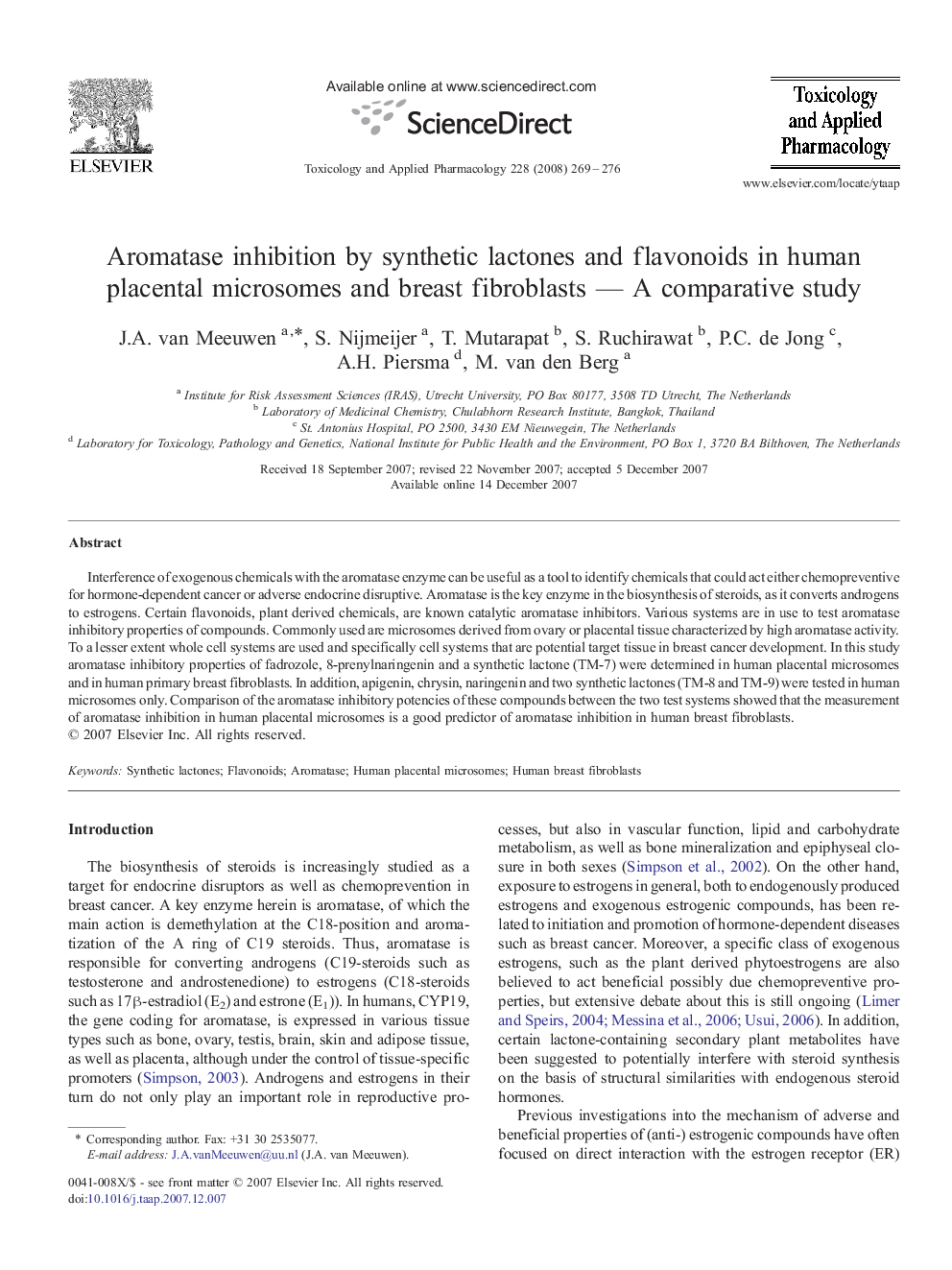| Article ID | Journal | Published Year | Pages | File Type |
|---|---|---|---|---|
| 2570603 | Toxicology and Applied Pharmacology | 2008 | 8 Pages |
Abstract
Interference of exogenous chemicals with the aromatase enzyme can be useful as a tool to identify chemicals that could act either chemopreventive for hormone-dependent cancer or adverse endocrine disruptive. Aromatase is the key enzyme in the biosynthesis of steroids, as it converts androgens to estrogens. Certain flavonoids, plant derived chemicals, are known catalytic aromatase inhibitors. Various systems are in use to test aromatase inhibitory properties of compounds. Commonly used are microsomes derived from ovary or placental tissue characterized by high aromatase activity. To a lesser extent whole cell systems are used and specifically cell systems that are potential target tissue in breast cancer development. In this study aromatase inhibitory properties of fadrozole, 8-prenylnaringenin and a synthetic lactone (TM-7) were determined in human placental microsomes and in human primary breast fibroblasts. In addition, apigenin, chrysin, naringenin and two synthetic lactones (TM-8 and TM-9) were tested in human microsomes only. Comparison of the aromatase inhibitory potencies of these compounds between the two test systems showed that the measurement of aromatase inhibition in human placental microsomes is a good predictor of aromatase inhibition in human breast fibroblasts.
Related Topics
Life Sciences
Environmental Science
Health, Toxicology and Mutagenesis
Authors
J.A. van Meeuwen, S. Nijmeijer, T. Mutarapat, S. Ruchirawat, P.C. de Jong, A.H. Piersma, M. van den Berg,
